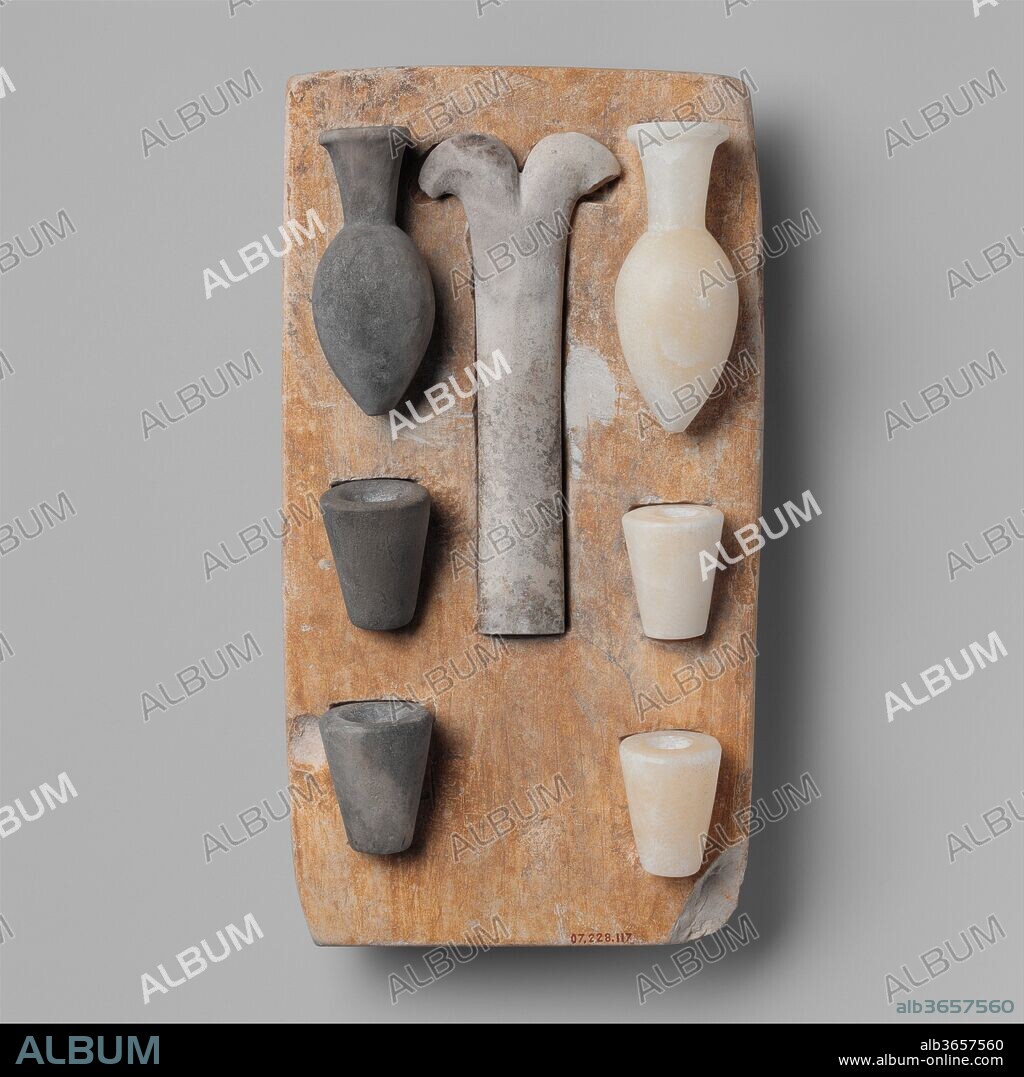alb3657560
Model of the "Opening of the Mouth" ritual equipment

|
Ajouter à une autre Lightbox |
|
Ajouter à une autre Lightbox |



Avez-vous déjà un compte? S'identifier
Vous n'avez pas de compte ? S'inscrire
Acheter cette image

Titre:
Model of the "Opening of the Mouth" ritual equipment
Légende:
Voir la traduction automatique
Model of the "Opening of the Mouth" ritual equipment. Dimensions: Tray: L. 22 × W. 12 × H. 3.2 cm (8 11/16 × 4 3/4 × 1 1/4 in.). Dynasty: Dynasty 5-6. Date: ca. 2465-2150 B.C..
The small stone tray holds models of objects required for the Opening of the Mouth ceremony. This rite reanimated the deceased or animated a statue so that it could eat, breathe, see, hear, and otherwise enjoy everything offered to it.
The forked instrument was touched to the mouth of the deceased's mummy or statue; it symbolically restored the individual's capability of independent existence. In addition to the implement, this set includes replicas of the vessels with which the newly revived spirit was offered milk (a baby's first source of nourishment), salt water (used for cleansing), and fresh water..
Forked blades (see 16.2.6) were included in burials throughout the Predynastic Period.The cutting edge is the V-shaped notch. Although the implement's exact purpose is unknown, there is persuasive evidence that it was used at birth to cut the umbilical cord and was placed in the grave to assist its owner's rebirth into the afterlife.
Technique/matériel:
Tray: limestone; vessels: Travertine (Egyptian alabaster), greywacke
Période:
OLD KINGDOM
Musée:
Metropolitan Museum of Art, New York, USA
Crédit:
Album / Metropolitan Museum of Art, NY
Autorisations:
Modèle: Non - Propriété: Non
Questions sur les droits?
Questions sur les droits?
Taille de l'image:
3981 x 3982 px | 45.4 MB
Taille d'impression:
33.7 x 33.7 cm | 13.3 x 13.3 in (300 dpi)
Mots clés:
 Pinterest
Pinterest Twitter
Twitter Facebook
Facebook Copier le lien
Copier le lien Email
Email
